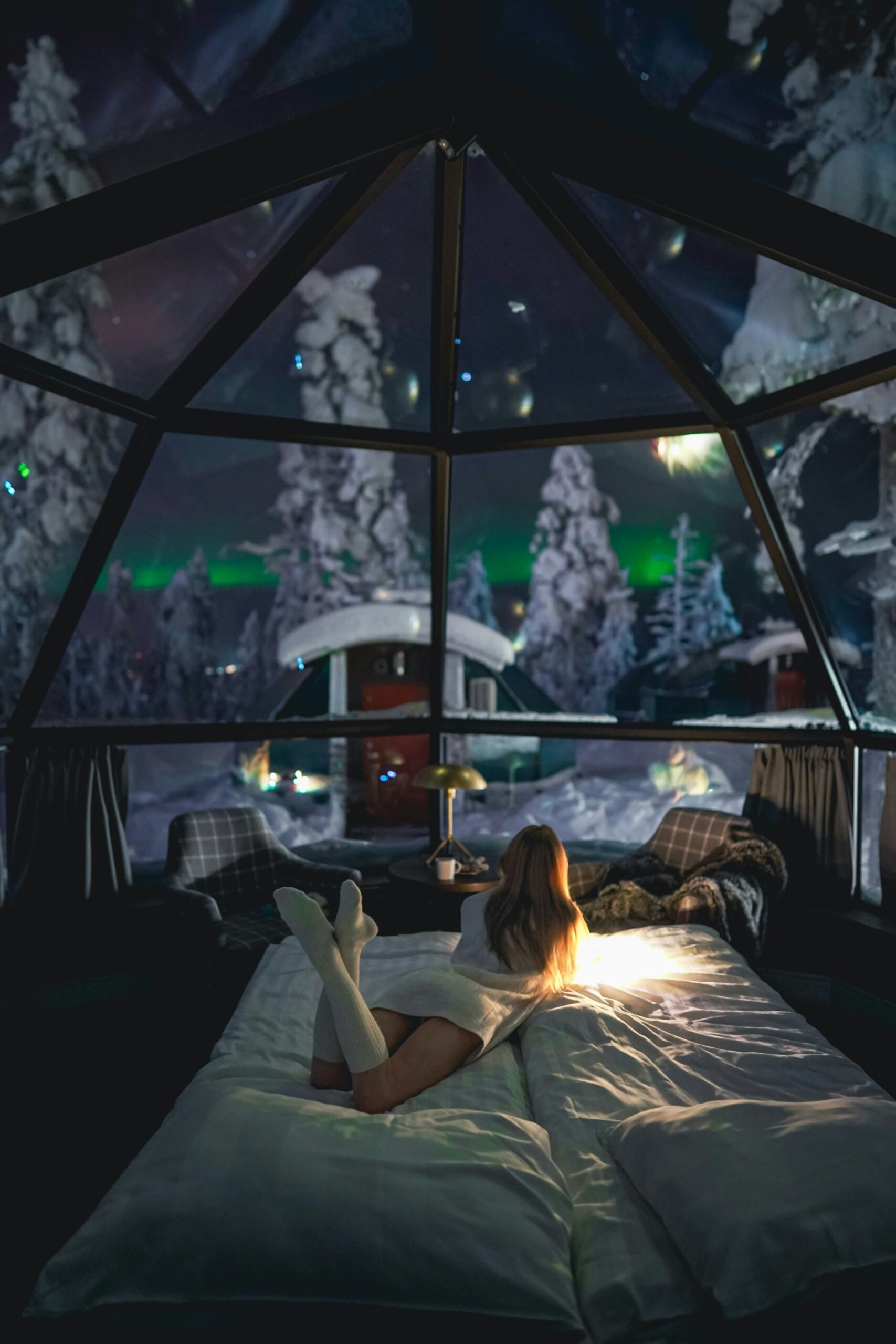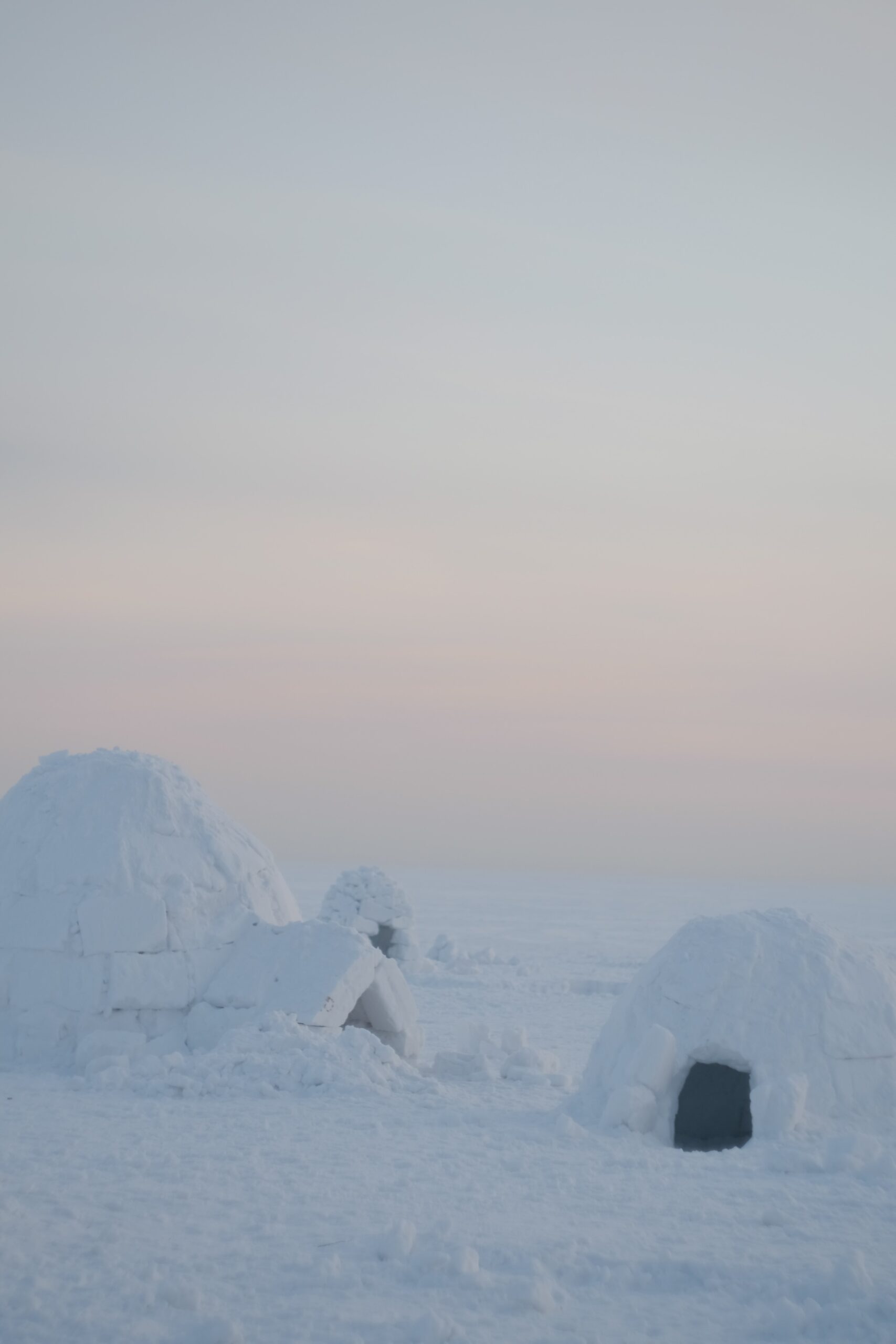Imagine finding yourself in a freezing wilderness, surrounded by nothing but ice and snow. The only chance of survival lies in constructing an igloo to shield you from the brutal cold. But how does one even begin to build such a intricate structure? In this article, we will take you through the step-by-step process of building an igloo for cold weather survival. From selecting the ideal location to gathering the right materials, you will learn the essential skills needed to create a safe and warm shelter in the harshest of conditions. So grab your winter gear and get ready to embark on this fascinating journey of igloo construction.
Understanding The Importance of an Igloo
An igloo is a dome-shaped structure made from blocks of compacted snow. It is traditionally built by the Inuit and other Arctic indigenous peoples. While igloos may seem simplistic in design, they play a crucial role in survival in extreme cold weather conditions. Understanding the importance of an igloo can mean the difference between life and death in these harsh environments.
The Role of Igloos in Survival
Igloos serve as reliable shelters in regions where temperatures plummet to dangerous levels. Their unique dome structure offers exceptional insulation, effectively trapping heat inside and keeping the bitter cold out. This heat retention is crucial for maintaining body temperature and preventing hypothermia, a serious condition that can occur when the body loses heat faster than it can produce.
In addition to protection from the cold, igloos also provide a barrier against strong winds and blizzards. The rounded shape helps redirect the force of the wind, minimizing the impact on the structure and those inside. This makes igloos an excellent shelter choice for surviving in severe weather conditions.
Benefits of Building an Igloo
There are several advantages to building an igloo as opposed to other makeshift shelters in cold weather survival scenarios. Firstly, igloos are relatively easy to construct, requiring only basic tools and materials that are typically readily available in snowy environments. They can be built quickly, allowing for immediate shelter and protection.
Furthermore, the insulating properties of an igloo make it an energy-efficient shelter. Once the structure is warmed by body heat or a small fire, minimal additional heat is needed to maintain a comfortable temperature inside, saving valuable energy resources. This can be especially important in prolonged survival situations where resources are limited.
Historical Uses of Igloo
Throughout history, igloos have played a significant role in the survival of indigenous Arctic communities. For centuries, the Inuit people relied on igloos as their primary housing during the winter months. These structures provided warmth, protection, and a sense of community, allowing families and groups to thrive in the harshest of conditions.
The historical significance of igloos extends beyond their practicality as shelters. They also hold cultural importance, representing the ingenuity and resourcefulness of indigenous peoples. In addition, igloos have become iconic symbols of the Arctic and are celebrated worldwide for their unique architecture and the resilience they represent.
Materials Needed for Igloo Construction
Constructing an igloo requires a careful selection of materials to ensure the strength and stability of the structure. While snow is the primary material, other factors such as ideal snow conditions and necessary tools must also be considered.
Ideal Snow Conditions
To build a sturdy and reliable igloo, the snow must meet specific criteria. The ideal snow for igloo construction is light and powdery, with enough moisture content to allow for proper compaction. This type of snow can be easily molded into blocks without crumbling or falling apart. Additionally, freshly fallen snow is preferred over old, compacted snow, as it retains more moisture and is easier to work with.
Tools Required
Although igloos can be built with minimal tools, a few key items can greatly simplify the construction process. The primary tool needed is a snow saw or snow knife, which allows for precise cutting of snow blocks. These tools have serrated blades, which make it easier to shape the blocks and ensure a tight fit during assembly. A shovel is also useful for clearing snow and creating a level foundation for the igloo.
Alternative Materials if Snow is Unavailable
In situations where snow is scarce or unavailable, alternative materials can be used to construct a shelter similar to an igloo. For example, if there is ample ice, an ice block igloo can be built using large ice blocks instead of snow blocks. Alternatively, materials such as branches, logs, or even fabric can be used to construct a temporary shelter that provides some protection from the elements.

Finding the Ideal Site for Igloo Construction
Selecting the right location for building an igloo is essential to maximize its effectiveness and durability. Here are some factors to consider when choosing a site for construction.
Sheltering From Wind
One of the primary factors to consider is the wind direction and intensity. It is advisable to position the entrance of the igloo away from prevailing winds. This will help prevent snow from blowing inside and minimize cold drafts. Additionally, choosing a location with natural windbreaks such as trees or rock formations can provide extra protection.
Proximity to Resources
Another consideration is the availability of essential resources nearby. When building an igloo, you will need a source of snow for constructing blocks. Ensure that there is an ample supply of suitable snow nearby to make the construction process more efficient. It is also advisable to choose a location close to a water source, as melting snow or ice is necessary for drinking and cooking.
Considering Snow Condition and Depth
The depth and quality of the snowpack should also be taken into account. Snow with a sufficient depth and density is necessary to provide structural integrity and insulation. Avoid areas with shallow or soft snow, as this can compromise the stability of the igloo. Additionally, be cautious of areas prone to avalanches, as constructing an igloo in such locations can be extremely dangerous.
Designing the Igloo
The design of the igloo is a crucial aspect of successful construction. Considerations such as different types of igloo designs, size, and the suitability of the design to your needs should be taken into account.
Different Types of Igloo Designs
There are several variations of igloo designs, each with its own advantages and applications. The most common is the dome-shaped igloo, which offers excellent insulation and stability. Other designs include the tunnel entrance igloo, which features a long entrance tunnel for added wind protection, and the snow block lean-to, which utilizes a natural snow formation as a base for the structure.
Size Considerations
The size of the igloo will depend on the number of occupants and the intended use. A smaller igloo is more efficient in retaining heat, but may not provide enough space for comfort. Conversely, a larger igloo may require more energy to heat but can accommodate additional people or equipment. Consider the practicalities and limitations of your situation when determining the size of your igloo.
Choosing the Correct Design for your Needs
Selecting the appropriate design for your needs is crucial to ensure the effectiveness of the igloo. Consider factors such as the expected weather conditions, the duration of your stay, and the number of occupants. A dome-shaped igloo is generally suitable for most situations, providing a good balance of insulation, stability, and ease of construction.

The Igloo Construction Procedure
Building an igloo is a step-by-step process that requires careful attention to detail. Following the correct procedure will ensure a sturdy, reliable, and safe shelter. Here is a breakdown of the igloo construction procedure.
Cutting the Snow Blocks
To start the construction process, snow blocks must be cut to size and shape using a snow saw or snow knife. These blocks will form the outer walls of the igloo. Start by cutting a circular base with a diameter slightly larger than the desired size of the igloo. Continue cutting blocks in a spiral pattern, gradually reducing the diameter with each layer. This will create a dome shape when the blocks are stacked.
Placing the Snow Blocks
Once the snow blocks have been cut, carefully stack them on top of each other, starting from the base and working your way up. Ensure that each block is tightly fitted against the one below to provide stability. As the dome shape takes form, adjust the angle of each block to maintain the curvature of the igloo. Take care to fill any gaps between the blocks with loose snow to prevent heat loss.
Forming the Igloo Dome
As you reach the top of the igloo, the snow blocks will eventually meet at the center to form the dome. At this point, extra caution must be exercised to maintain the structural integrity of the dome. Ensure that each block is securely in place and compact the snow around the joints to strengthen the connection. Once the dome is complete, a small ventilation hole can be left open at the top to regulate airflow.
Building the Igloo Entrance
The entrance of the igloo is an essential component that requires careful consideration during construction. It serves as both an access point and a windbreak. Here are the steps to creating a functional and effective igloo entrance.
Ideal Location for the Entrance
The ideal location for the entrance is on the side of the igloo, away from prevailing winds. This will minimize the entry of cold drafts and blowing snow. Additionally, positioning the entrance towards a natural windbreak, such as a large snowbank or a makeshift wall, can further enhance wind protection.
Construction Steps
To create the entrance, cut an opening in the side of the igloo using a snow saw or snow knife. The size of the opening should be slightly smaller than the doorway to prevent excessive heat loss. Smooth the edges of the opening to reduce the risk of injury when entering or exiting.
Creating a Windbreaking Entrance Tunnel
To provide additional wind protection, an entrance tunnel can be built. This tunnel should be angled downwards towards the entrance to prevent snow from blowing inside. The tunnel can be constructed by stacking snow blocks in a curve or by digging a trench and covering it with blocks or snow.

Ventilation in an Igloo
Proper ventilation is essential for maintaining a comfortable and safe living environment inside an igloo. Without ventilation, excessive moisture and stale air can accumulate, leading to condensation, frost formation, and even respiratory issues. Here’s how to ensure adequate ventilation in your igloo.
Importance of Ventilation
Ventilation allows for the exchange of fresh air and the removal of stale air, moisture, and carbon dioxide. It helps regulate humidity levels and prevents the accumulation of harmful gases. Without ventilation, the risk of carbon dioxide poisoning and suffocation increases.
Creating the Ventilation Hole
To provide ventilation, a small hole can be left open at the top of the igloo after the construction is complete. This hole allows for the escape of stale air and moisture, ensuring a constant supply of fresh air. The size of the ventilation hole can be adjusted based on the weather conditions, but it should be small enough to prevent excessive heat loss.
Regulating Airflow Inside the Igloo
To control the airflow inside the igloo, adjustable vents can be created by using snow blocks with deliberate gaps or by partially covering the ventilation hole with a piece of fabric or animal hide. This allows for the regulation of airflow without compromising heat retention. Experiment with different configurations to find the most comfortable and efficient airflow for your needs.
Interior Igloo Arrangement for Survival
Properly arranging the interior of the igloo can significantly enhance comfort and functionality. Here are some tips for arranging the space inside your igloo for survival.
Sleeping Platform Placement
Designate a sleeping platform raised off the ground to minimize heat loss through direct contact with the cold floor. This can be achieved by using insulating materials such as foam pads or reindeer hides. Place the platform towards the back of the igloo, away from the entrance, to avoid cold drafts.
Arranging Your Supplies
Organize your supplies strategically within the igloo to maximize space and accessibility. Keep essential items such as food, water, and fire-starting materials easily within reach. Hang up any wet clothing or equipment to dry, using available hooks or improvised hangers.
Heat Management Inside the Igloo
Heat management is crucial to prevent overheating or excessive heat loss. Monitor the temperature inside the igloo and adjust the airflow through the ventilation hole or vents as necessary. If the temperature becomes too warm, partially cover the ventilation hole or open vents to regulate heat. Conversely, in extremely cold conditions, ensure that there is enough fresh air circulation to maintain a good balance of warmth and airflow.
Tips for Sleeping Comfortably in an Igloo
A good night’s sleep is essential for physical and mental well-being, especially in cold weather survival situations. Follow these tips to enhance your comfort and sleep quality inside an igloo.
Proper Bedding Supplies
Invest in high-quality, insulated sleeping bags or sleep systems designed for cold weather camping. These will provide superior insulation and warmth, ensuring a comfortable night’s sleep. Consider using additional layers such as blankets or thermal liners for added warmth.
Layering for Warmth
Layering is key to retaining body heat during sleep. Wear thermal base layers and insulating clothing to retain warmth throughout the night. Avoid wearing excessive layers that can lead to perspiration, as moisture can compromise insulation and make you feel colder.
Positioning for Optimal Heat Conservation
Sleeping in a curled position with your limbs close to your body can help conserve heat. Minimize contact with the cold floor by using insulating mats or pads. Additionally, ensure that your head and neck are adequately covered to prevent heat loss through these sensitive areas.
Maintaining and Repairing an Igloo
Keeping your igloo in good condition is essential for long-term survival. Regular maintenance and periodic repairs are necessary to ensure the structural integrity and functionality of the shelter.
Checking for Cracks
Regularly inspect the walls and dome of the igloo for any cracks or gaps. These can weaken the structure and compromise its ability to retain heat. Use additional snow to fill any cracks and compact it firmly to form a solid seal.
Snow Patching Techniques
If your igloo sustains damage or develops holes, quick repairs are necessary to maintain its integrity. Use snow blocks or loose snow to patch any damaged areas. Ensure that the patch is tightly packed and secure to prevent further deterioration.
When to Rebuild an Igloo
In certain situations, rebuilding the igloo may be necessary. Factors such as significant structural damage, the melting or shifting of the snowpack, or changing weather conditions may call for a fresh start. Assess the condition of your igloo regularly and be prepared to rebuild if necessary to ensure the safety and comfort of all occupants.
Building an igloo for cold weather survival is a skill that combines resourcefulness, knowledge, and careful planning. Understanding the importance of an igloo, selecting the right materials and site, designing a suitable structure, following the correct construction procedure, and maintaining your shelter are all critical elements in successful igloo construction and survival in extreme cold environments. By mastering these techniques and implementing the tips provided, you can create a safe and comfortable haven amidst the freezing conditions. Stay warm, stay safe, and thrive in the face of adversity with the remarkable igloo as your ally.

